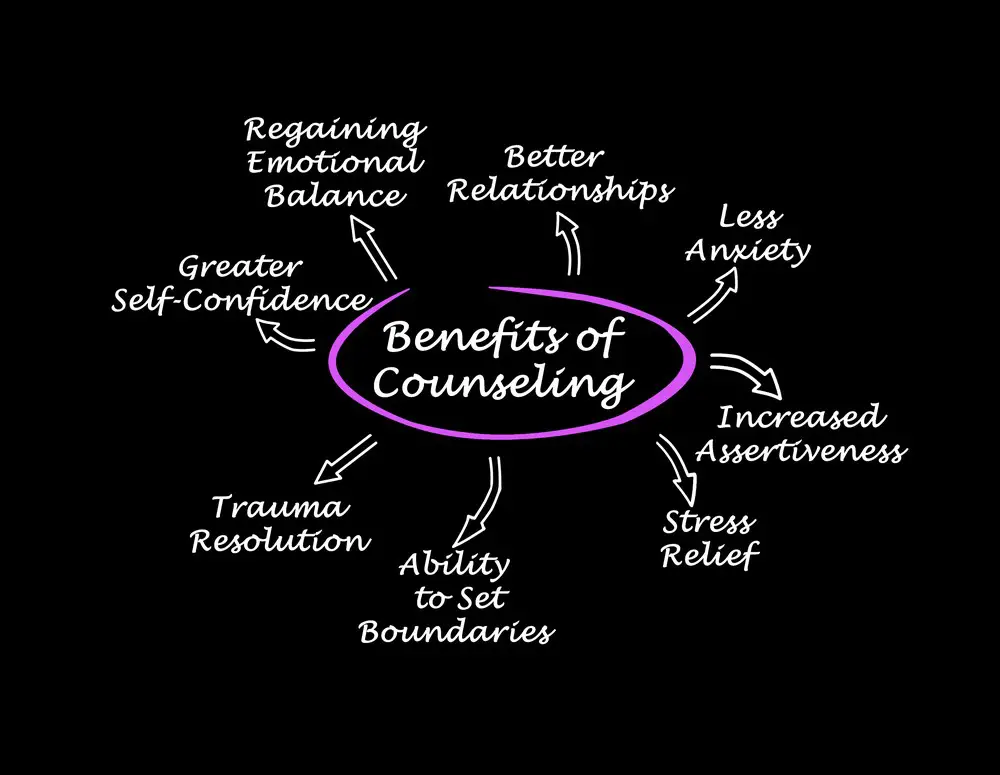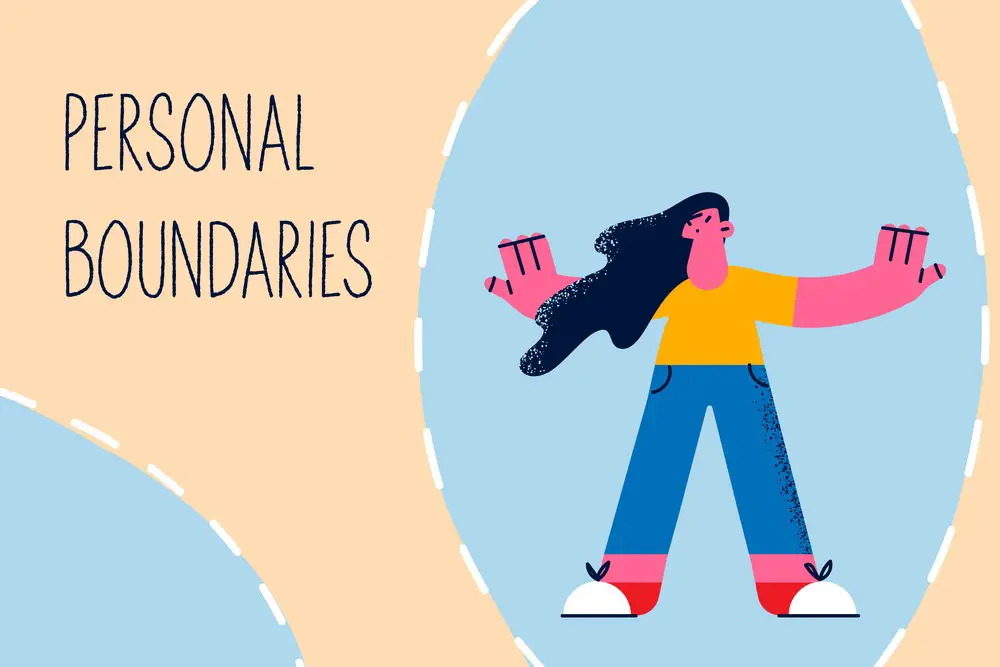As a BetterHelp affiliate, we receive compensation from BetterHelp if you purchase products or services through the links provided
The journey towards improving family dynamics and addressing underlying issues often involves the expertise of a mental health professional specializing in family therapy. Through this type of therapy, families can work together to understand their unique challenges and implement strategies to strengthen their relationships and communication. One key aspect of family therapy is setting specific goals that guide families to progress, healing, and growth.
Family therapy aims to foster a healthier environment within the family unit, addressing problems such as poor communication, boundary issues, and coping with stress or conflict. Mental health professionals utilize various techniques and approaches to guide family members to understand better their roles, responsibilities, and contributions to the family dynamic. The therapy process aids in establishing healthier communication channels, breaking down barriers, and addressing past traumas or conflicts that may be affecting the family.
Effective family therapy focuses on identifying common problems and concerns and working towards long-term solutions that benefit all family members. Through psychoeducation and therapeutic interventions, families can acquire the tools and skills necessary to tackle life’s challenges together, support each other, and create a nurturing environment for growth and healing.
Key Takeaways
- Family therapy helps improve relationships and communication within the family unit.
- Setting goals is critical to family therapy, guiding progress, and healing.
- Mental health professionals utilize various techniques to address problems and facilitate long-term solutions for families.
 Understanding Family Therapy
Understanding Family Therapy
Family therapy is a form of group psychotherapy, also known as talk therapy, that focuses on improving relationships and behaviors within a family unit. It involves a therapist working with different family members, often all at once, to create an environment in which effective communication and problem-solving can occur.
When you engage in family therapy sessions, you often work with a licensed family therapist who has experience and understands the unique dynamics and challenges in a family setting. These therapists have specialized training and are often members of professional organizations like the American Association for Marriage and Family Therapy.
During family therapy, you may encounter different types of approaches and techniques. Some of these include:
- Strategic family therapy
- Structural family therapy
- Systemic family therapy
- Cognitive-behavioral family therapy
Each approach utilizes different interventions and strategies tailored to your family’s needs. Your therapist will help you learn new skills and ways of thinking, which can strengthen the relationships within your family and lead to a healthier home environment.
Family therapy can also be especially helpful when one or more family members deal with a mental health condition. The therapist can provide education and support for the individual with the condition and the family members who may be affected by or need guidance in dealing with the situation.
In family therapy sessions, you might work on goals such as:
- Increasing open and effective communication among family members
- Understanding and managing the impact of a mental health condition on family dynamics
- Cultivating empathy and support among family members
- Learning conflict resolution strategies to address family issues
Remember, your family therapist is there to guide and support you. By engaging in family therapy, you are taking a crucial step toward improving the overall well-being of your family unit and fostering a more robust, healthier bond among its members.
Significance of Communication
Effective communication plays a crucial role in family therapy. It is essential for understanding one another, fostering a supportive environment, and resolving conflicts. Improving communication helps create solid connections and aids in achieving the common goals of therapy.
During family therapy sessions, therapists often focus on enhancing communication skills among family members. Some useful techniques for improving communication within families include:
- Active listening: Give attention to the speaker, making eye contact and focusing on their message. This helps in demonstrating that you value their opinion and feelings.
- Empathy: Put yourself in the other person’s shoes, understanding the emotions and thoughts behind their words. This helps build trust and fosters emotional support.
- Open-ended questions: Use these types of questions to encourage elaboration and genuinely understand the other person’s perspective.
- Non-verbal communication: Pay attention to body language, tone of voice, and facial expressions, as they can provide insights into the feelings and attitudes of your family members.
By working on these communication skills, you can contribute to a more harmonious family environment and address issues more effectively. Implementing these strategies can ultimately lead to improved understanding and more robust connections among family members.
Key Takeaway: Effective communication is a vital component of family therapy. Improving communication skills supports understanding, conflict resolution, and stronger connections within the family.
Key Players in Family Therapy
When engaging in family therapy, it’s essential to understand the different roles that each family member plays. Each family member brings a unique perspective and dynamics to the sessions, which can significantly impact the therapeutic process.
Family members: Family therapy often includes all family members who are available and willing to participate. This can ensure that everyone’s perspectives are heard and accounted for as you work towards your family goals. Remember that more participants mean a higher chance of resolving conflicts and improving communication.
Children: Involving children in family therapy is crucial, as they can be heavily affected by family dynamics and conflicts. Creating a safe space for them to express their thoughts and feelings is essential. Remember that their voice matters and need to feel valued and acknowledged.
Teens: Adolescents may face unique challenges and developmental issues that require specific attention. A successful therapy process will engage teenagers and help them develop effective coping strategies for their struggles.
Parents: As primary caregivers and decision-makers, parents play a critical role in family therapy. They need to be open to change, self-awareness, and actively participate in improving family dynamics and communication.
Siblings: Siblings can share valuable insights into family dynamics and may support one another throughout the process. Acknowledging their unique relationships and helping them develop healthier communication patterns is essential.
Grandparents: While they may not always be directly involved in family therapy, grandparents can significantly impact family dynamics. They often provide additional support and perspective that can be valuable in moving towards a healthier family environment.
Remember, each person brings a unique background, view, and contribution to the therapy process. Understanding and considering the perspectives of each family member participating in the therapy can pave the way for effective and meaningful change. Keep fostering open and honest communication between all family members, as it’s the key to reaching a successful outcome.
 Importance of Boundaries and Roles
Importance of Boundaries and Roles
Boundaries serve as vital frameworks for families, defining each family member’s expectations, responsibilities, and roles. Clear, healthy boundaries foster effective family dynamics, allowing each individual to function and grow optimally. Let’s delve into the importance of establishing and maintaining boundaries and roles within a family.
Boundaries are essential in creating a sense of security and order within the family unit, enabling everyone to understand their rights, responsibilities, and limits clearly. Boundaries shape how family members interact, helping maintain balance and stability – homeostasis. However, avoid rigid or enmeshed boundaries, hindering closeness and growth.
Family roles define the various positions occupied by family members, shaping each person’s specific responsibilities and contributions to the family system. You foster a supportive, collaborative, and functional family environment by understanding and respecting these roles. Family therapy can be beneficial in re-establishing or redefining these roles.
Here are some strategies for enhancing boundaries and roles in your family:
- Communication: Engage in open, honest conversations, ensuring each family member feels heard and respected. This helps in establishing and maintaining clear boundaries.
- Flexibility: Adapt and adjust boundaries as the family grows and evolves. Stay attuned to the needs and perspectives of each member and be open to change.
- Balance: Strive for a balance between independence and interdependence – ensuring individuals have autonomy while encouraging close connections.
Considering these points, you can actively work towards fostering an environment where each family member flourishes and contributes positively to the overall family function. Remember: healthy boundaries and clearly defined roles are key to creating a solid family structure and nurturing resilient family dynamics.

Common Issues Addressed in Family Therapy
Family therapy plays a crucial role in helping to resolve various conflicts and issues that could arise in a family. It is designed to target many troubling situations. Here are some common issues that family therapy can tackle:
Conflict: Family disputes and misunderstandings can lead to high levels of stress, leading to the need for professional intervention. Family therapy aims to resolve these conflicts, promoting improved communication and understanding among family members.
Abuse: In physical, emotional, or sexual abuse within the family, therapy can provide a safe environment for victims to share their experiences and feelings. Therapists guide family members toward healthier behaviors and encourage them to establish appropriate boundaries.
Divorce and Separation: Family therapy can help couples address marital problems, such as infidelity or communication breakdowns. It can assist them in navigating the emotional upheavals of divorce or separation and support co-parenting efforts.
Stress, Depression, and Anxiety: These mental health challenges can impact individuals and their families. Family therapy can uncover the root causes and provide strategies for dealing with emotions, leading to improved mental health and overall well-being for everyone involved.
Eating Disorders and Substance Use: For families impacted by eating disorders or addiction, therapy can offer support in understanding the triggers and challenges affected family members face, helping to build healthier coping mechanisms and offering guidance towards recovery.
Grief and Loss: Family therapy can support the grieving process and provide emotional healing in times of bereavement or loss. This is achieved by fostering open communication, creating a safe space for sharing feelings and assisting family members in coming to terms with their loss.
By addressing these common issues, you can expect improved family dynamics, reduced stress, and increased empathy among family members.
 Techniques Used in Family Therapy
Techniques Used in Family Therapy
Family therapy is a powerful tool for helping families navigate through various challenges. As a collaborative process, family therapy utilizes various techniques and strategies to address specific problems and promote healthy communication among family members. Here are some of the most common techniques used in family therapy:
1. Insight therapy: Insight therapy focuses on helping family members to understand better each other’s emotions, thoughts, and behaviors. By gaining insight into the dynamics that drive their interactions, you can work together to identify unhelpful patterns and develop more effective ways of relating and communicating.
2. Structural family therapy: This approach examines the structure and hierarchy within the family. By observing and analyzing how family members relate to one another, therapists can identify issues and help you create a healthier family structure. This might involve establishing clear boundaries, roles, and responsibilities or redistributing power more evenly within the family.
3. Systemic family therapy: In systemic family therapy, the family is part of broader systems, such as school, work, and community environments. This approach seeks to address problems by considering the impact of external factors on the family. You might explore strategies for coping with social or environmental stressors and harnessing resources within your broader network.
4. Strategic family therapy: Strategic family therapy aims to bring about change by addressing specific problems within the family. Techniques might include assigning tasks, role-playing, or establishing goals and deadlines. Your therapist will work with you to develop a treatment plan tailored to your family’s unique needs and circumstances.
Embracing various strategies and techniques, family therapy can provide valuable support in strengthening relationships, improving communication, and promoting healthier interactions among family members. By working with your therapist, you can develop a treatment plan that aligns with your family’s goals and fosters a more harmonious family life.
 Role of Education in Family Therapy
Role of Education in Family Therapy
Education plays a significant role in family therapy, as it equips family members with essential knowledge and skills to improve their relationships and overall well-being. One important aspect of education in family therapy is psychoeducation, which aims to provide family members with insights into mental health disorders and their impact on behavior and emotions. By better understanding the challenges affected family members face, you can develop empathy and a supportive environment for recovery.
Parenting skills are another crucial component of education in family therapy. As a parent, you want the best for your children, and learning effective parenting techniques can be invaluable in cultivating a nurturing and stable environment for your family. During family therapy sessions, you may acquire essential strategies on:
- Communication skills: Encourage open and honest conversations to foster a deep connection with your children.
- Setting boundaries: Establish clear rules and expectations for your children and consistently enforce them.
- Conflict resolution: Learn to resolve disagreements respectfully and constructively, promoting a harmonious household.
- Emotional regulation: Support your children in managing their emotions, teaching them appropriate ways to express their feelings.
Family therapy sessions may also provide general education on mental health, emotional well-being, and family dynamics. This knowledge can empower you to make informed decisions and implement positive changes in your family life.
In conclusion, education in family therapy is a vital aspect of improving the overall dynamics and relationships within a family. It encompasses psychoeducation, parenting skills, and general knowledge about mental health to offer an essential foundation for growth and healing.
Family Therapy for Specific Conditions
Family therapy can be beneficial in addressing a variety of mental health and behavioral conditions within the family unit. By providing a supportive and structured environment, therapy can help family members learn to communicate more effectively and better understand one another’s perspectives.
When dealing with specific mental health conditions, such as depression or anxiety disorders, family therapy can offer valuable support. You may find that the treatment helps your family learn about the nature of the conditions, identify triggers and barriers, and develop strategies to manage better the challenges that arise from living with mental health issues.
For families facing eating disorders like anorexia, family therapy offers a crucial support system. It helps you understand the complexity of eating disorders, learn about family dynamics’ role in their development, and develop coping strategies for the affected individual and the entire family.
In cases where behavioral issues are present, family therapy can assist you in establishing boundaries, understanding the reasons behind the behaviors, and developing appropriate and effective strategies to address and modify them. This can be particularly helpful for parents dealing with children with behavioral problems at school or home.
For families where a loved one has received a mental health diagnosis, family therapy can play a significant role in helping to adjust to the changes that accompany such a diagnosis. This can include providing education about the condition, helping family members better understand the experiences of their loved one, and building a support network that promotes resilience and recovery.
In summary, family therapy can be an invaluable resource for families dealing with various mental health conditions and behavioral issues. With the guidance of a professional therapist, you and your family can work together to develop clear and achievable goals that promote a healthier family dynamic and improved well-being for all involved.
Effects of Environment on Family Dynamics
Your family’s environment plays a crucial role in shaping your family dynamics. Understanding how different settings, such as home, school, and the wider community, can impact your family relationships is essential to fostering a healthy dynamic.
Home Environment
A nurturing and supportive home environment can significantly influence the relationships between family members. Factors to consider include:
- Creating a safe and peaceful atmosphere where family members feel comfortable expressing their emotions
- Encouraging activities that promote open communication and bonding, such as family meals or game nights
- Addressing conflicts healthily and constructively without resorting to verbal or physical aggression
Family Environment
The interaction between family members also impacts the dynamics. Keep in mind:
- Establishing clear boundaries to respect each other’s personal space and emotional needs
- Fostering empathy and understanding by listening to each other’s perspectives and validating their feelings
- Avoiding criticism and blame while working together to find solutions to any problem faced by family members
School Environment
The school setting can contribute to the family dynamics, especially for children and adolescents, by:
- Encouraging parental involvement in their academic life, such as attending parent-teacher conferences and staying up-to-date with school events
- Addressing any problems or challenges faced at school, including bullying or academic difficulties, to help prevent stress from spilling over into the family environment
- Encouraging open conversation about school experiences and providing support when needed, helping to maintain a healthy relationship between family members.
Considering these factors, you can create environments that nurture and strengthen your family’s relationships. As a result, you will be better equipped to work together in addressing any challenges that may arise and further enhance your family dynamics.
Coping Mechanisms and Problem-Solving
Developing effective coping mechanisms and problem-solving skills is essential when participating in family therapy. These abilities enable you to manage and work through challenges within your family unit.
Coping Mechanisms: Coping mechanisms refer to the strategies and techniques to manage stress and reduce emotional discomfort. They come in different forms, and some are more beneficial than others. In family therapy, it’s crucial to identify and utilize healthy coping mechanisms to boost your well-being. Here are some healthy coping mechanisms to consider:
- Exercise: Engaging in physical activities can help clear your mind, release endorphins, and provide an outlet for frustration.
- Relaxation techniques: Practicing meditation, mindfulness, deep-breathing exercises, or progressive muscle relaxation can reduce stress.
- Social support: Reaching out to friends, family members, or support groups can provide emotional support to help cope with challenges.
Problem-Solving: Problem-solving is essential to coping with challenges in family therapy. Addressing issues head-on and finding practical solutions can create a healthier family environment. To build your problem-solving abilities, consider these steps:
- Identify the problem: Clearly define the issue that needs resolution, ensuring all family members understand and agree on the problem.
- Brainstorm solutions: Encourage everyone to contribute ideas and solutions, fostering a collaborative process and open communication.
- Evaluate and compare options: Weigh the pros and cons of each proposed solution, considering the possible outcomes and the potential impact they may have on family members.
- Decide on a solution: Once a thorough evaluation is complete, agree on a solution that best meets the family’s needs. Be sure to have a consensus to prevent resentment or further conflict.
- Implement the solution: Put the chosen solution into action, making necessary adjustments.
- Monitor progress and review: Regularly assess the progress made and modify the plan or restart the problem-solving process if necessary.
Remember, developing robust coping mechanisms and effective problem-solving skills is essential in family therapy. These abilities will help you navigate the challenges you may encounter and strengthen your bonds and foster a more harmonious family life.
 The Process of Family Therapy
The Process of Family Therapy
During family therapy, you and your family members will attend appointments with a therapist who specializes in improving relationships and resolving conflicts within the family. This therapy is usually short-term, lasting several weeks to a few months, depending on your family’s unique circumstances. Here’s how the process typically unfolds:
- Setting the stage: At the beginning of therapy, you’ll schedule a series of appointments to meet with the therapist. These meetings will allow the therapist to understand the dynamics and issues within your family.
- Assessment: Your therapist will assess your family’s strengths and challenges to tailor the therapy approach accordingly. They may ask questions, observe interactions, or use questionnaires to gather information about your family’s relationships and patterns.
- Therapeutic goals: Once your therapist has a solid understanding of your family’s situation, they’ll work with you to identify specific goals for therapy. These goals might involve improving communication, resolving conflicts, or addressing unhealthy family patterns.
- Active therapy: In the therapy sessions, the therapist will guide you and your family through various techniques and interventions to reach the established goals. You may be asked to participate in discussions, role-playing exercises, or problem-solving activities.
- Homework: To reinforce the progress made in therapy sessions, your therapist may assign homework for you and your family to complete between appointments. This could include practicing new communication skills or completing exercises to improve family dynamics.
- Monitoring progress: During therapy, the therapist will monitor your family’s progress toward the established goals. They may adjust the therapeutic approach or suggest referral to additional resources.
- Navigating recovery: As your family begins to experience positive changes, your therapist will support you in maintaining and strengthening those improvements. They’ll offer guidance on strategies to continue your family’s journey towards a healthier, more harmonious environment.
In this way, family therapy aims to create lasting, meaningful change within your family unit, providing the tools and support needed to nurture healthier relationships and address future challenges.
Role of Empathy in Family Therapy
In family therapy, empathy is crucial in fostering connection and understanding between family members. As a therapist, you must create an environment where everyone feels heard, validated, and respected. This can be achieved through active listening, reflecting emotions, and encouraging open communication.
When working with families, it’s essential to empathize with each individual’s perspective, recognizing their feelings and experiences as valid. This helps create trust and enables members to feel comfortable sharing their emotions. Remember to:
- Listen closely to each family member and validate their emotions
- Recognize and reflect the feelings and experiences of each individual
- Encourage open communication to create a safe space for sharing
By demonstrating empathy, you can promote empathy within the family as well. When family members see their thoughts and feelings being valued, they become more open to understanding and empathizing with each other. This mutual empathy can lead to stronger connections and better conflict resolution, ultimately strengthening the family unit.
Maintaining empathy in family therapy also means being attuned to verbal and non-verbal cues. Picking up on body language, tone of voice, and facial expressions can provide insights into emotions that may not be openly expressed. Using this information allows you to respond appropriately and supportively.
Some strategies for actively responding to non-verbal cues include:
- Leaning forward to indicate interest and active listening
- Mirroring or matching body language to demonstrate understanding
- Keeping an open posture and maintaining eye contact to encourage trust
Key Takeaway: Empathy is essential in family therapy to create a safe space, foster understanding, and establish trust. By actively listening to each family member, reflecting on their emotions, and encouraging open communication, you can support healthy relationships and healing in the family unit.
Guidance for Incarceration, Death, and Natural Disasters
As a family therapist, it’s vital to address and support families coping with difficult situations such as incarceration, death, and natural disasters. Each scenario presents unique challenges, but there are general principles that can help you guide families during these trying times.
Incarceration
When dealing with the incarceration of a parent or family member, focus on the following approaches:
- Prioritize stability: Children often face significant losses when a parent is imprisoned, such as losing a caregiver, home, or routine. Help families establish routines to create a sense of stability.
- Emphasize the importance of communication: Encourage families to maintain regular contact with the incarcerated individual to preserve family bonds and provide emotional support.
- Support the non-incarcerated parent or caregiver: Provide guidance on coping mechanisms and help them access resources to support the family.
Death
For families coping with the death of a loved one, consider these strategies:
- Encourage open communication: Creating a space for family members to express their emotions and share memories of the deceased can facilitate the healing process.
- Navigate individual responses: Recognize that each person might grieve differently, so be prepared to adapt your therapeutic approach.
- Offer guidance on rituals and funeral arrangements: Help families through the practical aspects of mourning, which may provide comfort and closure.
Natural Disasters
In the aftermath of a natural disaster, provide support by focusing on:
- Identifying typical and clinical symptoms: Children might exhibit various emotional, behavioral, or physical symptoms. Be prepared to identify these responses and intervene accordingly.
- Training parents and teachers: Provide guidance and simple interventions that can help children cope with the trauma of a natural disaster.
- Addressing family needs: Offer resources and assistance for practical concerns, such as housing, food, and financial aid, to help families regain stability.
In each of these situations, adapting your approach to the unique needs of each family will be essential. Remember to prioritize communication, emotional support, and practical guidance to help families navigate these challenging experiences.
Benefits of Family Therapy
Family therapy is a powerful tool that offers numerous advantages for individuals and families who choose to take part in it. It is a form of group psychotherapy that focuses on improving relationships and behaviors within the family unit. Here are some key benefits of participating in family therapy:
- Improved Communication: One of the primary goals of family therapy is to enhance communication among family members. By working together and sharing your feelings, you can better understand each other’s perspectives, leading to healthier and more open interactions.
- Stronger Familial Bonds: Family therapy encourages a supportive environment where all members can work on their relationships. This collaborative effort helps to build a strong foundation that allows you to overcome challenges and maintain well-being within the family.
- Enhanced Problem-Solving Skills: By examining family dynamics and understanding each individual’s role within the unit, you can learn new strategies for addressing and resolving conflicts. Family therapy promotes problem-solving skills that will enable you to better navigate difficult situations in the future.
- Increased Empathy and Understanding: Through open communication and collaboration, family therapy fosters a sense of empathy and understanding among family members. You can develop deeper connections and strengthen relationships by putting yourself in another’s shoes.
- Reduced Conflict: Family therapy aims to identify and address the underlying issues contributing to conflicts within the family unit. By addressing these issues and working together to find resolutions, the overall level of conflict within the family can be significantly reduced.
In summary, family therapy provides a supportive framework that promotes improved communication, stronger bonds, enhanced problem-solving skills, increased empathy, and reduced conflict. By engaging in this process, you can work towards a healthier and happier family dynamic that bolsters the well-being of each member.
 Role of Professionals in Family Therapy
Role of Professionals in Family Therapy
In family therapy, the role of mental health professionals is vital in helping families work through their issues. These professionals, such as psychologists, counselors, and guidance experts, possess the specialized knowledge to facilitate healthy communication, establish coping mechanisms, and create strong supportive boundaries.
These mental health professionals use various techniques to:
- Understand and manage the complex dynamics within a family system
- Assess each individual’s needs and concerns, as well as the overall family functioning
- Develop and implement effective intervention strategies that promote positive change
Professionals in family therapy, like Licensed Marriage and Family Therapists (LMFTs), are specifically trained to work with families. They employ many different approaches to bring about positive change in family dynamics.
Some of their key responsibilities include:
- Establishing a safe and open environment for all family members to express their thoughts and emotions
- Identifying patterns of communication and interaction that may be contributing to conflicts or challenges within the family
- Guiding family members in setting realistic goals and helping them to develop the skills necessary to achieve them
- Monitoring progress and adjusting therapy as needed to ensure continued success and development
Throughout the process of family therapy, mental health professionals work tirelessly to help you and your family members achieve growth, healing, and improved relationships. By engaging with a trained professional, your family can develop a deeper understanding of each other, strengthen bonds, and overcome challenges.
Remember, the key takeaway is that professionals in family therapy play a crucial role in helping families navigate complex dynamics and ultimately move toward a more positive and cohesive family environment.
 Putting It Into Practice: Your Guide to Implementing Family Therapy Effectively
Putting It Into Practice: Your Guide to Implementing Family Therapy Effectively
By this point, you’ve gleaned a lot about the nuances of family therapy. But how can you put all this knowledge into action? This section aims to help you recognize when therapy might be needed, set achievable goals for your therapeutic journey, and monitor your progress effectively. Consider this your practical roadmap for navigating the world of family therapy.
Recognizing When Therapy is Needed
Before setting goals, it’s crucial to identify the red flags that signify the need for family therapy.
- Communication Breakdown: No one talks; when they do, it’s volatile.
- Boundary Issues: A lack of privacy or personal space becomes evident.
- High-Stress Levels: Everyone is always on edge and has no peace.
- Persistent Conflicts: Arguments are more frequent and less resolvable.
Quick Tip:
If you spot more than one of these signs consistently, it’s probably time to consider seeking professional help.
Setting Goals for Family Therapy
Goals give everyone something to strive for and create a sense of accountability.
- Improved Communication: Clear, open dialogues replace shouting matches.
- Establish Boundaries: Clearly define what’s acceptable and what isn’t.
- Conflict Resolution: Learn new strategies to deal with disagreements effectively.
- Emotional Support: Ensure everyone feels heard, loved, and supported.
Quick Tip:
Don’t hesitate to adjust these goals as you progress. Therapy is a dynamic process, and what you aim for can change over time.
Monitoring Signs of Progress
Knowing you’re making progress can be incredibly motivating for everyone involved.
- Easier Conversations: Less yelling, more understanding.
- Better Coping Mechanisms: Stress or conflicts are managed more healthily.
- Increased Happiness: Generally, everyone seems more content.
- Stronger Bonds: Members take steps to understand and support each other.
Quick Tip:
Progress isn’t always linear. There will be bumps along the way, but the overall trend should be towards improvement.
Frequently Asked Questions

What are common objectives in family therapy interventions?
Family therapy interventions typically aim to:
- Improve communication within the family
- Resolve conflicts and build healthier relationships
- Strengthen family bonds and support systems
- Address individual issues in the context of the family
- Foster positive changes in family dynamics and behaviors
How do family therapy techniques improve communication?
Family therapy techniques can help improve communication by:
- Encouraging open and honest dialogue
- Teaching active listening skills
- Facilitating structured and guided conversations
- Uncovering underlying issues and feelings
- Promoting empathy, understanding, and validation among family members
What are some examples of goals for resolving family conflict?
Goals for resolving family conflict may include:
- Establishing healthy boundaries and expectations
- Developing strategies for managing anger and frustration
- Learning conflict resolution skills and compromise
- Addressing underlying issues contributing to the conflict
- Strengthening trust and collaboration among family members
What are the key stages in the family therapy process?
The family therapy process generally involves:
- Assessment: Gathering information about the family’s history, dynamics, and presenting issues.
- Goal setting: Establishing specific, measurable, achievable, relevant, and time-bound (SMART) goals for therapy.
- Intervention: Implement therapeutic strategies and techniques to address the identified issues and work towards the goals.
- Evaluation: Assessing progress and making necessary adjustments to the treatment plan.
- Termination: Ending therapy once goals have been met or when the family feels they no longer need support.
How does functional family therapy differ from strategic family therapy?
Functional family therapy (FFT) focuses on creating a more adaptive and cohesive family system, while strategic family therapy (SFT) aims to address specific problems and alter family patterns. The critical differences between FFT and SFT include:
- FFT emphasizes the importance of the therapist’s relationship with the family and the need for empathy and collaboration.
- SFT may involve direct or indirect interventions designed to provoke change and challenge dysfunctional patterns within the family.
What role do family systems play in setting therapy goals?
Family systems theory recognizes that an individual’s behavior is connected to and influenced by the relationships and dynamics within their family. When setting therapy goals, it’s crucial to consider the context of the family system, as changes in one family member’s behavior can impact others. By addressing the family system, therapy goals can be more holistic and effective in promoting lasting change.
About Jacob Maslow
After surviving the traumatizing events of 9/11, I took it upon myself to heal through helping others. I’m the primary caregiver of my children and understand from first-hand experience the lonely paths you have to walk as a partner and parent when leaving an unhealthy relationship.
We’re all echoing in a dark space that doesn’t have to be this empty, and that’s been my mission since finding solace and recovery in therapy: To help comfort others who are still in shock and at the prime of their struggle.
I came across BetterHelp after searching for this type of community. I wanted to belong to a body of proactive therapists and supportive therapy veterans that allowed me to see other sides of the story.
It was unconventional, and that’s what attracted me most. During my most challenging times, when my ex-wife completely cut me off from my children, I found comfort and clarity through BetterHelp.
Instead of being chained to a strict therapist recommendation, I was in charge of who I felt understood my struggle most. That allowed me to find my true peace, as I was reunited with those who read behind my words and had first-hand experience with my trauma.
Recovery is a choice; with BetterHelp, that choice will be a few clicks away. You can join their couples-oriented platform, Regain.us, for those stuck with family estrangement and toxic relationship patterns.
- 3 Ways Wearing a Hat Can Help Lower Your Stress Levels - April 19, 2025
- Breaking the Silence: Why Men’s Mental Health Matters More Than Ever - April 15, 2025
- How to Transform a Home’s Patio Space into a Relaxing Space - March 23, 2025
This site contains affiliate links to products. We will receive a commission for purchases made through these links.


 Understanding Family Therapy
Understanding Family Therapy
 Importance of Boundaries and Roles
Importance of Boundaries and Roles Techniques Used in Family Therapy
Techniques Used in Family Therapy Role of Education in Family Therapy
Role of Education in Family Therapy
 The Process of Family Therapy
The Process of Family Therapy Role of Professionals in Family Therapy
Role of Professionals in Family Therapy Putting It Into Practice: Your Guide to Implementing Family Therapy Effectively
Putting It Into Practice: Your Guide to Implementing Family Therapy Effectively
